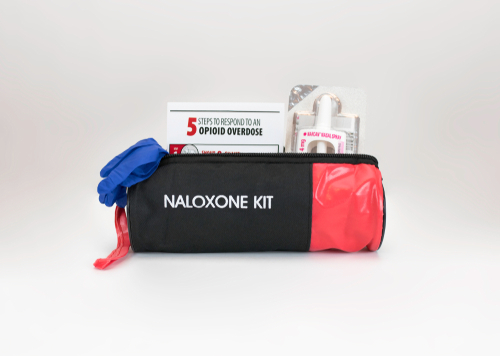
The New Mexico Department of Health (NMDOH) recently reported that prescription opioid overdose deaths decreased statewide in 2019 when more than 94,000 doses of naloxone were dispensed or distributed, representing an increase of 95 percent from 2018.
NMDOH also said that there were more than 4,000 overdose reversals reported throughout the state.
“New Mexico has had a long history of opioid overdose – heroin in the 1990’s, Rx opioids and heroin in the 2000’s, and recently the addition of illicit fentanyl,” a health department spokesman told Health Crisis Alert in an email. “NMDOH believes that naloxone is an important tool to prevent opioid overdose death.”
The increased use of the Prescription Monitoring Program by prescribers and the adoption of prescription guidelines correlates with the decline in prescription opioid overdose deaths, other than fentanyl, and it also reflects the push to use naloxone, an opioid overdose reversal drug, according to NMDOH.
“Naloxone saves lives,” said the NMDOH spokesman. “Naloxone is a safe, easy-to-use medication, either as a nasal spray or an injection, that rapidly reverses the effects of an opioid overdose.”
Overdose deaths caused by prescription opioids other than fentanyl decreased from 193 to 177 in 2019, according to NMDOH, which has supported the enactment of several important pieces of state legislation, most recently Senate Bill (SB) 221 in 2019. The measure requires healthcare providers to advise patients on the risk of prescription drug overdose, about opioid reversal medication, “and to co-prescribe an opioid antagonist (naloxone) when a patient is prescribed more than a four-day supply of opioids,” the spokesman said.
NMDOH also works with several partners to educate retail pharmacies on SB 221 and the Statewide Standing Order that makes naloxone available to anyone without a prescription. In 2019, Medicaid claims data shows that 95 percent of retail pharmacies in New Mexico filled naloxone orders, with 945 doses of naloxone in 2017 paid for by Medicaid. The number increased to 36,208 doses in 2019, the health department spokesman said.
Additionally, the NMDOH Syringe Services Program has been distributing naloxone since 2001, according to the department, which says that the amount of naloxone distributed through the program has increased in recent years, from 6,798 doses in 2015 to 27,818 doses in 2019. “In 2019, there were 4,124 reported opioid overdose reversals among Syringe Services participants,” said the NMDOH spokesman.
NMDOH also collaborates with the New Mexico Human Services Department (NMHSD) to increase the availability of naloxone on many grant-funded projects, both through the provision of epidemiological support or ensuring services are being distributed statewide. Both departments also have worked to train law enforcement agencies to carry and use naloxone. “They are often first on scene of a drug overdose,” the spokesman said.
The NMHSD’s Behavioral Health Services Division also has provided large quantities of naloxone to programs around the state through several programs, beginning with 7,678 doses in 2017 and 30,720 doses in 2019. And NMHSD has trained over 22,743 community members, family members, tribal members, first responders, volunteer fire departments, social services agency staff, treatment agency staff, detention centers, and others, and has distributed more than 35,195 naloxone kits (or approximately 70,000 doses) since November 2015.
At the same time, however, NMDOH also reported that illicit substance overdose deaths increased last year by 13 percent across the state from 537 in 2018 to 605 in 2019, an amount that exceeds the previous high of 540 deaths in 2014.
“The battle to fight drug misuse in New Mexico remains a priority,” said New Mexico Department of Health Acting Secretary Billy Jimenez earlier this month. “The numbers are disheartening. The department will continue to work closely with our partners to decrease death by overdose and will adapt to the changing nature of the drug epidemic to address the threat of illegal street drugs including methamphetamine, fentanyl and heroin but more education, awareness and treatment needs to be done.”




